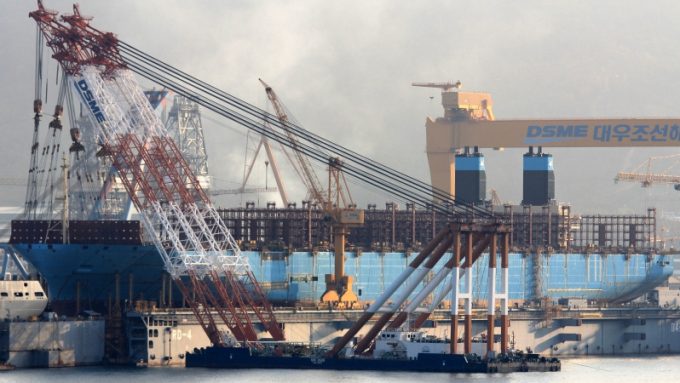Carriers look to short-term gains over blanking, as Red Sea crisis props up rates
With the Red Sea crisis continuing to artificially prop up container spot rates, carriers have ...

The container shipping industry could rid itself of the overcapacity – largely held responsible for years of heavy losses – within the next couple of years, but only if carriers continue “unrealistic” levels of discipline.
Speaking at last week’s TOC Europe Container Supply Chain event in Amsterdam, SeaIntelligence consulting partner and chief executive Lars Jensen described a “trident” of challenges that carriers would have to overcome for a structural balance between supply and demand to return to the liner industry.
He said the last time such a balance existed was 2006, and added that compared with that year, today there were 30-35% more teu slots on vessels than demand from shippers.
However, he added, that takes into account slow-steaming, which has absorbed significant amounts of capacity – “right now, we have 12-14% overcapacity”.
And he said: “If scrapping continues at the rate that it is today, there are no new orders and slow-steaming continues, there will be a balance between supply and demand in 2019.
“Demand will catch up with supply in liner shipping if, and only if these three conditions are met. This is the most positive structural scenario for the industry, and in reality that balance will probably come around later.”
Andrew Penfold, director – global maritime at consultancy WSP Parsons Brinkerhoff, agreed with the 2019 dateline but he warned: “I anticipate that we will be stuck with this overcapacity through to 2019, but should there be an improvement in demand, then I think we will see a slowdown in scrapping from its current very high level.
“Also, some of the old panamax ships which have a very low value could return to the market and be used for trading at very low charter rates, and that would also limit the return to an equilibrium.
He also reiterated his warning form a couple of years ago that a resumption of demand growth could lead to orders for even larger vessels.
“If there were some move back towards equilibrium in the shipping market, then there are designs for 24,000teu vessels which could be quite rapidly introduced, especially given the presence of Chinese shipyards, which are very hungry to build these kind of vessels.
“I can see orders for 24k ships in 2019 for delivery in 2021,” he said.
Both Mr Penfold and Mr Jensen also pointed to weak demand fundamentals that continued to act as a drag on the industry’s recovery.
“The macroeconomic future remains uncertain,” Mr Penfold said. “There have been some limited positive signals from the US and EU over past six months, but the fundamentals suggest you have to be extremely brave to think we have turned the corner and are about to return to pre-2009 levels of growth.
“The latest IMF figures are shaky and, most significantly, we expect some reduction in Chinese GDP growth, which is very worrying,” he said.
Even if GDP does, grow, Mr Jensen argued, it may not have the effect on container demand that it once did.
“The trouble is that the GDP-to-container growth multiplier is not growing, and it is not going to come back – if anything, it could shrink further. In addition, the trades that are growing tend to be shorter trades – the average distance a container moves is going down, so it is teu-km that needs to be absorbed, not just teu,” he said.
Comment on this article